4° EDICIÓN DE LA BIENAL DEL FIN DEL MUNDO – MAR DEL PLATA – ARGENTINA
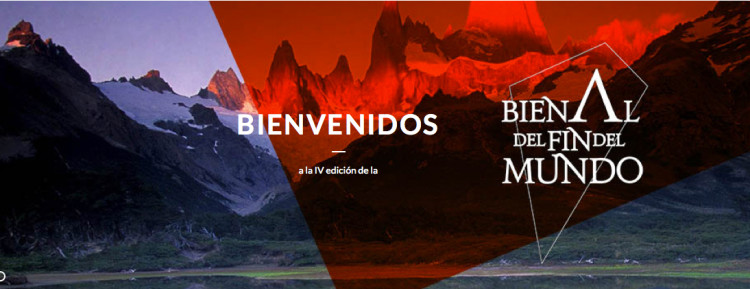
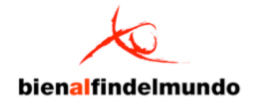
Polo Austral de las Artes, las Ciencias, el Turismo y la Ecología
Amenabar 1159 | 4to F (1426) Ciudad Autónoma de Buenos Aires
http://bienaldelfindelmundo.org/ – hola@bienaldelfindelmundo.org
Comunicado de Prensa N° 2
4° EDICIÓN DE LA BIENAL DEL FIN DEL MUNDO
Apertura de la sección Mar del Plata, Argentina
Presidente
Alberto Grottesi Errazu
Director artístico
Massimo Scaringella
Comité Curatorial
Vittoria Biasi, Ricardo Cadenas, Fortunata Calabrò, Alessandro Demma, Micol Di Veroli, Loredana Manca, Justo Pastor Mellado, Rafael Raddi, Daniel Rangel, Yin Rong
Auspician
Presidencia de la Nación Argentina
Ministerio de Cultura de la Nación
Ministerio de Desarrollo Social de la Nación
Ministerio de Turismo
Municipalidad de General Pueyrredón – Mar del Plata – Batán
Secretaría de Cultura de Mar del Plata
Ministerio de Asuntos Exteriores y de Cooperación
Internacional Italiano – “Año de Italia en Latinoamérica”
Ministerio de bienes, actividades culturales y turismo italiano
Embajada de Italia en Argentina
IGAV – Instituto Garuzzo para el arte contemporáneo
Federculture
Academia de Bellas Artes de Roma
Con el apoyo de
Instituto Nacional de la Música
Obras Sanitarias S.E. MGP y Escuela de Cerámica Rogelio Yrurtia (Mar del Plata)
Instituto Italiano de Cultura en Buenos Aires – Centro Cultural Coreano de Buenos Aires
Universidad de Delaware, Department of Art Office of Undergraduate Research (USA)
Arts and humanities research Council AHRC (Reino Unido)
Elinn Light y Moto Identity Design Group (Corea) – United Overseas Bank UOB (Tailandia)
Yokohama College of Art & Design y World Art and Culture Exchange (Japón)
Museo Bolivariano de Arte Contemporáneo Santa Marta (Colombia)
Prometeo Gallery de Ida Pisani en Milán (Italia)
La Bienal del Fin del Mundo es miembro de la International Biennial Association (IBA)
La IV Bienal del Fin del Mundo 2014/2015 profundiza en temas culturales, ambientales y ecológicos con el objetivo de generar espacios interdisciplinarios de reflexión, para lo cual fue creada en 2007 y continuó llevándose adelante en las ediciones sucesivas de 2009 y 2011. Esta edición, que se desarrolla con sedes en Argentina y en Chile, tendrá su inauguración de la sección de la ciudad argentina de Mar del Plata el 12 de diciembre de 2014 hasta el 28 de febrero de 2015, realizándose asimismo un convenio sobre Medioambiente y Arte Contemporáneo el 7 de febrero en la ciudad del extremo sur argentino de Ushuaia. Por su parte, la sección de la ciudad chilena de Valparaíso tendrá su apertura el 31 de enero y hasta el 31 de marzo de 2015, mientras que la de la ciudad chilena austral de Punta Arenas la habrá del 3 de febrero al 31 de marzo de 2015.
Esta edición, con el título “Contrastes y Utopías”, continúa y profundiza con las indagaciones llevadas adelante en pasadas ediciones sobre las problemáticas de la contemporaneidad, para proponer nuevos aportes a nuestro lema “pensar, en el fin del mundo, qué otro mundo es posible”, y es parte del proyecto denominado “Polo Austral de las Artes, las Ciencias, el Turismo y la Ecología”.
La IV Bienal del Fin del Mundo será testigo de la participación a aproximadamente 140 artistas nacionales e internacionales provenientes de 35 países, con eventos y acciones colaterales de promoción cultural y turística e Italia como país invitado de honor.
Además de los proyectos especiales, se podrán conocer en las secciones centrales los trabajos de:
Alketa Ramaj y Endri Dani (Albania), Haralampi G. Oroschakoff (Alemania), Jorge Canale, Juan Doffo, Andrés Denegri y Liliana Porter (Argentina), Tracey Moffat (Australia), Charley Case (Bélgica), Narda Zapata (Bolivia), Jairo Valdati (Brasil), Jia (China), K. Joachim Silue (Costa de Marfil), Mabel Poblet y Duniesky Martín (Cuba), Stevens Vaughn (EE.UU.), Ángel Marcos (España), Katja Tukiainen y Jukka Korkeila (Finlandia), Luis González Palma (Guatemala), Zaneta Vangeli, Yane Chalovski, Gruppo OPA y Nada Prlja (Macedonia), Esther Nienhuis (Holanda), Ravi Agarwal (India), Shay Frisch (Israel), Othon Castaneda (México), Grimanesa Amorós, Ana Teresa Barboza y Sandra Nakamura (Perú), Tim Parchikov (Russia), Pascal Schwaighofer (Suiza), Luoke Chen (Taiwán), Murat Cinar (Turchia), Ana Tiscornia (Uruguay), Juan Diego Pérez La Cruz (Venezuela).
PROYECTOS ESPECIALES
En esta serie de propuestas, diversos curadores construyen una red de poéticas internacionales partiendo de los fenómenos artístico-culturales desarrollados entre Italia y Occidente y, más particularmente, Sudamérica. La Bienal articula también este recorrido con el homenaje a cuatro grandes maestros del arte argentino recientemente fallecidos: León Ferrari, Eduardo Pla, Rogelio Polesello y Clorindo Testa.
CICLO “MÚSICA PARA UN MUNDO MEJOR”
Espacio Anual de Música Contemporánea con actividades centrales en residencias y conciertos fusión de músicos contemporáneos, además de talleres y ciclos de debate. Dentro de su ciclo “MÚSICA PARA UN MUNDO MEJOR” la Bienal del Fin del Mundo albergará al Festival SUENASUR, aporte especial del Ministerio de Cultura de la Nación con curaduría del Instituto Nacional de la Música (INAMU) a cargo de Silvina Zicolillo y Matías Giuliani.
ITALIA, PAÍS INVITADO DE HONOR
Título: PERSPECTIVAS ITALIANAS
Curador: Massimo Scaringella
Exponen Matteo Basilè, Ivan Berlanfante, Marco Bolognesi, Anita Calà, Francesco Candeloro, Daniele Cestari, Teresa Emanuele, Stefania Fabrizi, Angelo Marinelli, Fabio Mauri, Sebastiano Mauri, Ilaria Morganti, Fabrizio Passarella, Fabio Pennacchia, Daniela Perego, Alessandro Scarabello, Marinella Senatore, Marco Zanin. Las obras de esta amplísima y variada gama de artistas trazarán un perfil cultural de Italia con un particular énfasis en los nuevos lenguajes como expresión de una contemporaneidad en vertiginosa mutación. Este proyecto es uno de los primeros eventos de los acontecimientos organizados por el MAE-Ministerio de Relaciones Exteriores y Cooperación Internacional italiano “Año de Italia en Latinoamérica”. Muchos artistas realizarán aquí residencias en Mar del Plata para producir in situ las obras que al finalizar la Bienal serán donadas a entidades públicas del país con el fin de crear una colección pública permanente.
Título: En los confines del cielo posé los dones del blanco
Curadora: Vittoria Biasi
El proyecto tiene su centro en el nuevo pensamiento blanco. Éste, abandonadas las concepciones solitarias del siglo pasado, reconoce la importancia del vínculo profundo con el mundo y con las relaciones heterogéneas a fin de realizar su con-fusión en el transhumanismo de nuestro momento histórico social. El ícono del proyecto es el video a cuatro manos de Rossella Piccinno y Fiorella Rizzo sobre la Madonna Finibus Terrae que se yergue en la ciudad de Leuca (en griego blanco), en la punta extrema del sudeste de Italia. El resto del proyecto está realizado con la participación de artistas internacionales: Carlo Bernardini, Valentina Colella, Giulio De Mitri, Franco Ionda, Emanuela Lena, Daniela Monaci, Cristian Vitale, Fiorella Rizzo, Rossella Piccinno (Italia), Amrit Chusuwan (Tailandia), Isabelle Fordin (Francia), Soon Yul Kang (Corea), Ana Rewakowicz (Canadá), Jill Rock (UK), Toshihiko Kato (Japón).
Título: Visiones electrónicas
Curador: Alessandro Demma
El videoarte es ya un lenguaje fundamental del arte contemporáneo, una práctica que desde su nacimiento ha accedido e intrigado el debate crítico cultural. Instrumento de búsqueda en la experimentación, espacio utópico y de análisis de la realidad, el videoarte, entendido como dispositivo para “pensar la imagen hoy” (Alain Renaud), desde siempre ha abierto caminos a las representaciones y a la estructuración de la representación. Los videos de hecho se configuran cada vez más como topos del mixed media, de las tangencias y de los cruces entre pintura, fotografía y cine. Un “espacio crítico” que presenta algunas de las perspectivas más significativas del arte actual, representados en esta sección por los artistas italianos AfterAll, Filippo Centenari, Paolo Grassino, Paolo Leonardo, Eleonora Manc, Moio & Sivelli.
Título: Gimnasia de la visión, reseña dedicada a las performing arts
Curador: Paolo Angelosanto
Gimnasia de la Visión es un festival nómade itinerante de la live perfomance, una Maratón de Acciones. Esta muestra de perfomances es una reunión de los performers italianos Opiemme, Eleonora Chiesa y Mauro Romito, y nace con la idea de darle mayor visibilidad y poner en el centro del debate cultural la búsqueda y la experimentación en las artes visivas de un arte “efímero” que ve los cambios e intervenciones artísticas sobre el cuerpo como una obra de arte.
Título: Bordes, rupturas formales y conceptuales
Curadora: Micol Di Veroli
El proyecto se inserta en esta Bienal como una reflexión sobre el concepto de confín y los contrastes que genera. Para efectuar este análisis se ha elegido el video, medium líquido por excelencia que en su naturaleza cambiante describe plenamente la fluidez de las barreras y su transformación en el tiempo. La experiencia humana, la naturaleza y la tecnología filtran a través de las obras de Bianco- Valente (Italia), Keren Cytter (Israel), Rosa Jijon (Uruguay), Joan Jonas y Susan Kleinberg (EE.UU) una selección capaz de explorar los confines, descubriendo los límites o sobrepasándolos. Cada obra afronta la temática desde un punto de observación diverso, fuera que estuviere dirigido a un aspecto físico o perceptivo. De tal modo es posible trazar nuevas reflexiones sobre la posición del hombre respecto del mundo que lo rodea y de la sociedad que lo contiene.
Título: El ritmo del arte reside en un lugar intermedio
Curadora: Fortunata Calabrò
El ritmo del arte reside en algún lugar intermedio es testigo de una constelación de producciones artísticas que nos hacen cómplices, y nos habilitan a hablar de un territorio ajeno con solidaridad. En este marco, el objetivo de los artistas es transmitir sus narrativas a aquellos que están fuera de sus fronteras territoriales y ajenos a su cultura. Los artistas Juan Delgado (UK), Ignacio Acosta (Chile), Regina José Galindo (Guatemala), Omar Castaneda (Colombia) y Rafael Gómezbarros (Colombia) comparten la intención de explorar esa extraterritorialidad entre la absoluta fragilidad de la vida y la absoluta fragilidad de la muerte, donde el ritmo del arte reside en algún lugar intermedio…
Título: ¡Ni tambores, ni tamborines!
Curador: Rafael Raddi
La tensión entre lo finito y lo infinito es la marca del ser humano en sí mismo. El Yo no existe en potencia, sino apenas en la concreción de sí mismo: ninguna esencia lo explica. Pertenece a la dinámica del yo el encontrarse en su proceso de existencia. El Yo es la síntesis consciente de infinito y finito en relación a sí mismo. Los trabajos aquí presentados en esta Bienal por los artistas brasileños Elisa Bracher, Cadu, Renato Dib, Renata Padovan, Susana Quiroga, Ana Ruas, Carlos Emilio de Sá e Silva y el alemán Haralampi G. Oroschakoff nos traen la ruptura de los modelos sistemáticos,
transformando la verdad pura del infinito, al cual pertenece lo finito, cuando se quiere llegar al alma.
Título: La Utopía como Escenario y como Leyenda
Curador: Yin Rong
Artistas: Qiu Anxiong, Chen Qiulin, Grupo Utopia (Deng Dafei&He Hai), Wang Xieda
En otras partes del mundo podrían sorprenderse por las obras en video de un país famoso por su identidad histórica oriental y por la legendaria criatura mítica del Dragón. Los chinos usan distintos materiales con distintas técnicas y de una manera diferente para expresar sus ideas sobre el mundo, que hoy de todos modos es el mismo para todas las naciones de la tierra. Sin embargo, la utopía es un tema muy delicado en China porque es exactamente opuesto al de otros países.
Título: “Rigor sencillo” la presencia del arte povera en el arte brasileño actual
Curador: Daniel Rangel
El movimiento del arte pobre o arte povera surgió en Italia en los años 60 con artistas que estaban preocupados con los límites entre el arte y la vida, la cultura y la naturaleza. Una ruptura que cuestionó los sistemas visual, conceptual, estético y comercial vigentes. Los trabajos son pensados como proyectos y muchos son concebidos con materiales simples, naturales y comunes que evidencian la pobreza aparente de la obra de arte. Muchos eran efímeros y tenían una fuerte carga conceptual. A pesar de haber tenido lugar sólo en Italia y estar fechado en un período específico, el arte povera dejó marcas considerables en las décadas siguientes de producción artística. Hoy su legado conceptual es muy visible en el arte contemporáneo, especialmente en los “países en desarrollo”, que viven directamente con la estética y la realidad de la pobreza. El propósito de esta exposición es reflejar el legado del arte povera y su influencia en la actual producción brasileña de artes visuales. El proyecto presenta a los artistas Marcelo Cidade, Maxim Malhado y Marcos Chaves, que en sus trabajos suelen usar materiales simples, comunes, y están influidos por la cultura popular y su propia experiencia personal.
Título: ¡Comics, qué pasión!
Maestros del Comic italiano desde los años ’30 hasta nuestros días
Curador: Maurizio Scudero
Artistas: Athos Cozzi; Guido-Moroni Celsi; Kurt (Corrado) Caesar; Tony Chan (Antonio Canale); Aurelio Galleppini; Carlo Cossio; Giuseppe Cappadonia; Gino D’Antonio; Studio Esse-G-Esse; Guido Zamperoni; Roy D’Amy (Rinaldo Dami); Sergio Tarquini; Antonio Terenghi; Antonio Rubino; Giam Battista Carpi; Giulio Chiechini; Hugo Pratt; Franco Caprioli; Francesco Gamba; Franco Bignotti; Franco Donatelli; Raffaele Marcello; Gallieno Ferri; Mario Uggeri; Nevio Zeccara; Mario Caria; Gemano Ferri; Sergio Romagnoli; Giorgio Cambiotti; Sergio Zaniboni; Magnus (Roberto Raviola); Guido Crepax; Dino Battaglia; Erio Nicolò; Franco Oneta; Benito Jacovitti; Carlo Ambrosini; Alarico Gattia; Marco Torricelli; Giancarlo Alessandrini; Angelo Stano; Giampiero Casertano; Marco Nizzoli; Milo Manara; Stefano Biglia; Valerio Piccioni; Simone Bianchi.
Título: Pabellón Tibet
Curador: Ruggero Maggi
Artistas: Piergiorgio Baroldi, Carla Bertola – Alberto Vitacchio, Giorgio Biffi, Mariella Bogliacino, Giovanni Bonanno, Rossana Bucci, Nirvana Bussadori, Rosaspina B. Canosburi, Silvia Capiluppi, Domenico Castaldi, Pino Chimenti, Teo De Palma, Albina Dealessi, Marcello Diotallevi, Annamaria Gelmi, Bruno Gorgone, Oronzo Liuzzi, Fabrizio Martinelli, Gianni Marussi – Alessandra Finzi, Fernando Montà, Clara Paci, Lucia Paese, Marisa Pezzoli, Benedetto Predazzi, Mario Quadraroli, Giovanni Sedda, Cesare Serafino – Lucio Tiziano Serafino, Elena Sevi, Ilaria Sperotto, Roberto Testori, Micaela Tornaghi.
Pabellón Tibet es una idea simple pero con una fuerte carga emotiva interior, como aquella de los sueños. La extensa muestra expone obras realizadas directamente sobre Khata, un echarpe típico de Tibet, ofrecidas por los monjes en señal de saludo y amistad. Este ritual está convirtiéndose en un evento maravilloso capaz de revelar la unión entre el Arte Sacro Tibetano y el Arte Contemporáneo Occidental. No me hago ilusiones: sé que este proyecto es sólo algo pequeño, pero espero que pueda ayudar a romper la indiferencia que, por motivos inexplicables, ha crecido en torno a la tragedia de este maravilloso país con tales grandezas metafísicas. Cada Pabellón Nacional de una Bienal es un gran contenedor de arte por estatuto… mientras que el Pabellón Tibet es arte en su concepto.
Título: El arte contemporáneo marplatense
Curador: Loredana Manca
Integrar es un término que acerca y enmarca la propuesta de ésta Bienal del Fin del Mundo en Mar del Plata. Integrar significa pasar fronteras, trascender, reconocer, comunicar. Pero es cierto que nada podría agregarse, si podemos decir que nos complace presentar ésta breve exhibición de arte marplatense, breve por el número de los artistas convocados pero también profunda por la certeza de su valor. Mar del Plata estará presente, con voz definida y propia en la IV edición de la Bienal del Fin del Mundo, como una ventana abierta hacia el arte del mundo.
HOMENAJES: ARGENTINA IN MEMORIAM
La Bienal de Fin del Mundo rinde homenaje a cuatro grandes padres del pensamiento del arte argentino contemporáneo: León Ferrari, Eduardo Pla, Rogelio Polesello y Clorindo Testa.
South Pole for Arts, Sciences, Tourism & Ecology
Amenabar 1159 | 4to F (1426) Ciudad Autónoma de Buenos Aires
http://bienaldelfindelmundo.org/ – hola@bienaldelfindelmundo.org
Press Release No. 2
4th EDITION OF THE END OF THE WORLD BIENNIAL
Opening of the Mar del Plata section, Argentina
President
Alberto Grottesi Errazu
Artistic Director
Massimo Scaringella
Curatorial Committee
Vittoria Biasi, Ricardo Cadenas, Fortunata Calabrò, Alessandro Demma,Micol Di Veroli, Loredana Manca, Justo Pastor Mellado,Rafael Raddi, Daniel Rangel, Yin Rong
Sponsored by
Argentine Presidency
Argentine Ministry of Culture
Argentine Ministry of Social Development
Ministry of Tourism
Municipality of General Pueyrredón – Mar del Plata – Batán
Mar del Plata Department of Culture
Italian Ministry of Foreign Affairs and International
Cooperation – “Italia’s Year in Latin America”
Italian Ministry of Cultural Heritage, Activities and Tourism
Italian Embassy in Argentina
IGAV – Garuzzo Institute for Contemporary Art
Federculture
Rome Academy of Fine Arts
Supported by
National Music Institute (Argentina)
Obras Sanitarias S.E. MGP and Ceramic School Rogelio Yrurtia (Mar del Plata)
Italian Culture Institute in Buenos Aires – Korean Cultural Center in Buenos Aires
University of Delaware (USA) – Department of Art Office of Undergraduate Research
Arts and humanities research Counsil AHRC (United Kingdom)
Yokohama College of Art & Design and World Art and Culture Exchange (Japan)
Elinn Light and Moto Identity Design Group (Korea) – United Overseas Bank UOB (Thailand)
Bolivarian Museum of Contemporary Art Santa Marta (Colombia)
Prometeo Gallery of Ida Pisani at Milano (Italy)
The End of the World Biennial (Bienal del Fin del Mundo) is a member of the International Biennial Association (IBA)
The 4th End of the World Biennial 2014/2015 delves into cultural, environmental and ecological topics for the purpose of generating interdisciplinary spaces for thought, for which it was created in 2007 and further carried out in the successive 2009 and 2011 editions. This edition, held at venues in Argentina and Chile, will open the section of the Argentine city of Mar del Plata on December 12, 2014 through February 28, 2015. In addition, an Agreement on Environment and Contemporary Art will be entered into on February 7 in the most southern city in Argentina, Ushuaia. In turn, the section of the Chilean city of Valparaíso will be opened on January 31 and will last until March 31, 2015, while the section of the southern Chilean city of Punta Arenas will be opened from February 3 through March 31, 2015.
This fourth edition, titled “Contrasts & Utopias“, pursues and strengthens the inquiries from previous editions into contemporary issues, in order to suggest new contributions to our motto —“thinking, at the end of the world, what other world is possible”—, and is part of the project called “South Pole for Arts, Sciences, Tourism & Ecology”.
The 4th End of the World Biennial will witness the participation of about 140 national and international artists from 35 countries, with side events and actions promoting culture and tourism, and with Italy as the guest of honor.
Besides special projects, the main sections will exhibit works by: Alketa Ramaj and Endri Dani (Albania), Haralampi G. Oroschakoff (Germany), Jorge Canale, Juan Doffo, Andrés Denegri and Liliana Porter (Argentina), Tracey Moffat (Australia), Charley Case (Belgium), Narda Zapata (Bolivia), Jairo Valdati (Brazil), Jia (China), K. Joachim Silue (Ivory Coast), Mabel Poblet and Duniesky Martín (Cuba), Stevens Vaughn (USA), Ángel Marcos (Spain), Katja Tukiainen and Jukka Korkeila (Finland), Luis González Palma (Guatemala), Zaneta Vangeli, Yane Chalovski, Gruppo OPA and Nada Prlja (Macedonia), Esther Nienhuis (Holland), Ravi Agarwal (India), Shay Frisch (Israel), Othon Castaneda (Mexico), Grimanesa Amorós, Ana Teresa Barboza and Sandra Nakamura (Peru), Tim Parchikov (Russia), Pascal Schwaighofer (Switzerland), Luoke Chen (Taiwan), Murat Cinar (Turkey), Ana Tiscornia (Uruguay), Juan Diego Pérez La Cruz (Venezuela).
SPECIAL PROJECTS
In this series of proposals, various curators make up a network of international poetics, based on the artistic-cultural phenomena developed between Italy and the West and, particularly, South America.
The Biennial also articulates this experience with the commemoration of four recently deceased great masters in Argentine art: León Ferrari, Eduardo Pla, Rogelio Polesello and Clorindo Testa.
“MUSIC FOR A BETTER WORLD” CYCLE
Anual Space of Contemporary Music with central activities in residences and fusion concerts of contemporary musicians, plus workshops and debate cycles. Within its cycle “Music for a Better World”, the End of the World Biennial will host the SUENASUR Festival, the Argentine Culture Ministry’s special contribution curated by the National Music Institute (INAMU) with Silvina Zicolillo and Matías Giuliani in charge.
ITALY, GUEST COUNTRY OF HONOR
Title: ITALIAN PERSPECTIVES
Curator: Massimo Scaringella
Exhibitors: Matteo Basilè, Ivan Berlanfante, Marco Bolognesi, Anita Calà, Francesco Candeloro, Daniele Cestari, Teresa Emanuele, Stefania Fabrizi, Angelo Marinelli, Fabio Mauri, Sebastiano Mauri, Ilaria Morganti, Fabrizio Passarella, Fabio Pennacchia, Daniela Perego, Alessandro Scarabello, Marinella Senatore, Marco Zanin. The works in this extremely wide and varied range of artists will draw a cultural profile of Italy, particularly focusing on new languages, as an expression of a rapidly changing contemporaneity. This project is one of the first events among those organized by the MAE-Italian Ministry of Foreign Affairs and International Cooperation, “Italy’s Year Latin America”. Many artists will do residencies in Mar del Plata to produce works on site, to be donated at the end of the Biennial to domestic public entities in order to create a permanent public collection.
Title: At the Confines of the Sky I Placed the Gifts of White
Curator: Vittoria Biasi
The project focuses on the new white thinking. Once the lonely notions of the past century have been dropped, this project recognizes the importance of the deep bond with the world and with heterogeneous relations to achieve its (con)fusion in the transhumanism of our socio-historical time.
The project icon is the four-hand video by Rossella Piccinno and Fiorella Rizzo on the Madonna Finibus Terrae built in the city of Leuca (“white” in Greek), in the furthest Southeastern point of Italy.
The rest of the project involves the participation of international artists: Carlo Bernardini, Valentina Colella, Giulio De Mitri, Franco Ionda, Emanuela Lena, Daniela Monaci, Cristian Vitale, Fiorella Rizzo, Rossella Piccinno (Italy), Amrit Chusuwan (Thailand), Isabelle Fordin (France), Soon Yul Kang (Korea), Ana Rewakowicz (Canada), Jill Rock (UK), Toshihiko Kato (Japan).
Title: Electronic Visions
Curator: Alessandro Demma
Video art is already a major language in contemporary art, a practice which has, from the beginning, entered and intrigued the critical cultural debate. An instrument of search in experimentation, a utopian space aimed at analyzing reality, video art, understood as a device for “thinking about image today” (Alain Renaud), has always paved the way for representations and the structuring of representation. In fact, videos increasingly appear as topoi of mixed media, of the tangencies and exchanges among painting, photography and cinema. A “critical space” showing some of the more significant perspectives of today’s art, represented in this section by the Italian artists AfterAll, Filippo Centenari, Paolo Grassino, Paolo Leonardo, Eleonora Manc, Moio & Sivelli.
Title: Vision Gymnastics, a review devoted to performing arts
Curator: Paolo Angelosanto
Vision Gymnastics is a nomadic, traveling festival of live performance, a Marathon of Actions. This show of performances brings together Italian performers Opiemme, Eleonora Chiesa and Mauro Romito, and emerges with the aim of making more visible and placing at the core of the cultural debate the search for, and experimentation in visual arts with, an “ephemeral” art that sees changes and art interventions on the body as works of art.
Title: Borders, Formal and Conceptual Ruptures
Curator: Micol Di Veroli
The project appears at this Biennial as a reflection on the concept of boundary and the contrasts it generates. For this analysis, video has been chosen, since it is the liquid medium par excellence, fully describing in its changing nature the fluidity of barriers and their transformation over time. Human experience, nature and technology filter through the works by Bianco-Valente (Italy), Keren Cytter (Israel), Rosa Jijon (Uruguay), Joan Jonas and Susan Kleinberg (USA) a selection capable of exploring boundaries, discovering limits or going beyond them. Each work addresses the topic from a different viewpoint, whether aimed at a physical or perceptual aspect. Thus, new thoughts can be drawn on the position of man vis-à-vis the world that surrounds him and the society that contains him.
Title: The Rhythm of Art Lies Somewhere in Between
Curator: Fortunata Calabrò
The rhythm of art lies somewhere in between witnesses a constellation of artistic productions that make us partners and enable us to talk of an alien territory with sympathy. In this context, the artists’ purpose is to transmit their narratives to those outside their territorial borders and alien to their culture. Artists Juan Delgado (UK), Ignacio Acosta (Chile), Regina José Galindo (Guatemala), Omar Castaneda (Colombia) and Rafael Gómezbarros (Colombia) share the aim of exploring that extraterritoriality between the absolute frailty of life and the absolute frailty of death, where the rhythm of art lies somewhere in between…
Title: Neither Drums nor Tambourines!
Curator: Rafael Raddi
The tension between the finite and the infinite is the human being’s distinguishing feature. The Self does not exist potentially, but only in its realization: no essence explains it. The dynamics of the Self involve finding itself in its process of existence. The Self is the conscious synthesis of the infinite and the finite with relation to itself. The works shown here at this Biennial by Brazilian artists Elisa Bracher, Cadu, Renato Dib, Renata Padovan, Susana Quiroga, Ana Ruas, Carlos Emilio de Sá e Silva and the German Haralampi G. Oroschakoff present the rupture of systematic models, transforming the pure truth of infinity, to which the finite belongs, when the purpose is to reach the soul.
Title: Utopia As a Stage and As a Legend
Curator: Yin Rong
Artists: Qiu Anxiong, Chen Qiulin, Utopia Group (Deng Dafei & He Hai), Wang Xieda
In other parts of the world, it may come as a surprise to see works on video from a country that is well known for its Eastern historical identity and for its legendary, mythical creature —the Dragon.
The Chinese use various materials with varying techniques and with a different approach to express their ideas about the world, which is anyway the same today for all nations around the globe.
However, Utopia is a very sensitive topic in China, as it is exactly opposed to that in other countries.
Title: “Simple Rigors” —The Presence of Arte Povera in Current Brazilian Art
Curator: Daniel Rangel
The “poor art” or arte povera movement emerged in Italy in the 1960s with artists who were concerned about the boundaries between art and life, culture and nature. A rupture that questioned the visual, conceptual, aesthetic and commercial systems at the moment. Works are thought of as projects, and many are made with simple, natural, ordinary materials that show the apparent poverty of the work of art. Many were short-lived and had a heavy conceptual baggage. Although it took place only in Italy and within a specific period, arte povera left significant marks in the subsequent decades of artistic production. Its conceptual legacy today is highly visible in contemporary art, particularly in “developing countries”, that live directly with the aesthetics and the reality of poverty.
The purpose of this exhibition is to show the legacy of arte povera and its influence on the current Brazilian production of visual arts. The project presents artists Marcelo Cidade, Maxim Malhado and Marcos Chaves, who usually work with simple, ordinary materials, and are influenced by popular culture and by their own personal experience.
Title: Comics, What a Passion!
Masters of Italian Comics from the 1930s to the present
Curator: Maurizio Scudero
Artists: Athos Cozzi; Guido-Moroni Celsi; Kurt (Corrado) Caesar; Tony Chan (Antonio Canale); Aurelio Galleppini; Carlo Cossio; Giuseppe Cappadonia; Gino D’Antonio; Studio Esse-G-Esse; Guido Zamperoni; Roy D’Amy (Rinaldo Dami); Sergio Tarquini; Antonio Terenghi; Antonio Rubino; Giam Battista Carpi; Giulio Chiechini; Hugo Pratt; Franco Caprioli; Francesco Gamba; Franco Bignotti; Franco Donatelli; Raffaele Marcello; Gallieno Ferri; Mario Uggeri; Nevio Zeccara; Mario Caria;
Gemano Ferri; Sergio Romagnoli; Giorgio Cambiotti; Sergio Zaniboni; Magnus (Roberto Raviola); Guido Crepax; Dino Battaglia; Erio Nicolò; Franco Oneta; Benito Jacovitti; Carlo Ambrosini; Alarico Gattia; Marco Torricelli; Giancarlo Alessandrini; Angelo Stano; Giampiero Casertano; Marco Nizzoli; Milo Manara; Stefano Biglia; Valerio Piccioni; Simone Bianchi.
Title: Tibet Pavilion
Curator: Ruggero Maggi
Artists: Piergiorgio Baroldi, Carla Bertola – Alberto Vitacchio, Giorgio Biffi, Mariella Bogliacino, Giovanni Bonanno, Rossana Bucci, Nirvana Bussadori, Rosaspina B. Canosburi, Silvia Capiluppi, Domenico Castaldi, Pino Chi menti, Teo De Palma, Albina Dealessi, Marcello Diotallevi, Annamaria Gelmi, Bruno Gorgone, Oronzo Liuzzi, Fabrizio Martinelli, Gianni Marussi – Alessandra Finzi, Fernando Montà, Clara Paci, Lucia Paese, Marisa Pezzoli, Benedetto Predazzi, Mario Quadraroli, Giovanni Sedda, Cesare Serafino – Lucio Tiziano Serafino, Elena Sevi, Ilaria Sperotto, Roberto Testori, Micaela Tornaghi.
Tibet Pavilion is a simple idea, yet one with a strong inner emotional burden, such as dreams. The large exhibition shows works directly made on khata, a typical Tibetan scarf, offered by monks as a token of greeting and friendship. This ritual is becoming an amazing event, revealing the connection between Tibetan Sacred Art and Western Contemporary Art. I do not delude myself: I know that this project is only something small, but I do hope it may help break the indifference that, for inexplicable reasons, has grown around the tragedy of this magnificent country with such metaphysical wonders. Each National Pavilion at a biennial is, as a rule, a great art container… while the Tibet Pavilion is art in its very concept.
Title: Mar del Plata’s Contemporary Art
Curator: Loredana Manca
Integrating is a term that brings closer and defines the proposal of this End of the World Biennial in Mar del Plata. Integrating means going across borders, transcending, recognizing, communicating.
But certainly nothing could be added, if we can say that we are pleased to introduce this brief exhibition of Mar del Plata’s art —brief because of the number of artists involved but also deep because of the certainty of its value. Mar del Plata will be present, with a definite voice of its own, at the 4th edition of the End of the World Biennial, as an open window to worldwide art.
COMMEMORATIONS: ARGENTINA – IN MEMORIAM
The End of the World Biennial pays homage to four great fathers of thought in Argentine contemporary art: León Ferrari, Eduardo Pla, Rogelio Polesello and Clorindo Testa.

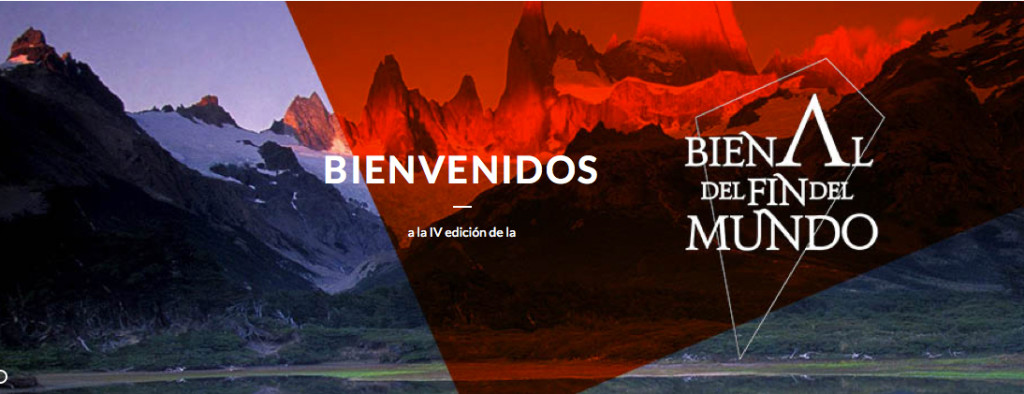
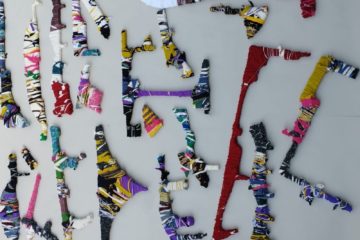
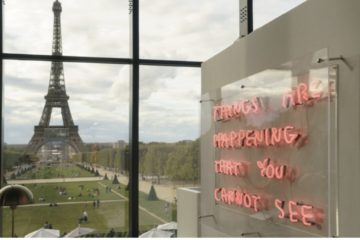
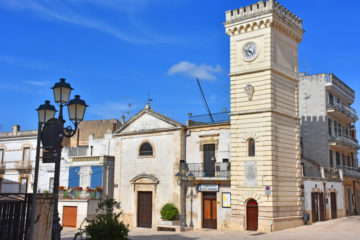
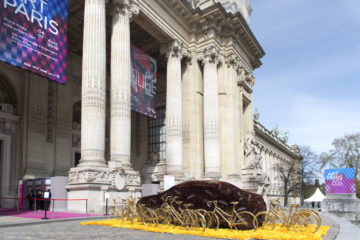

No Comment